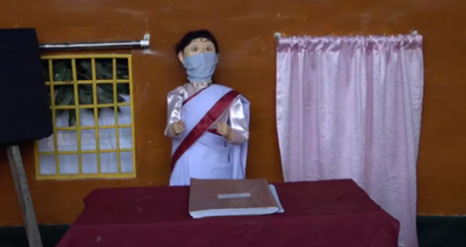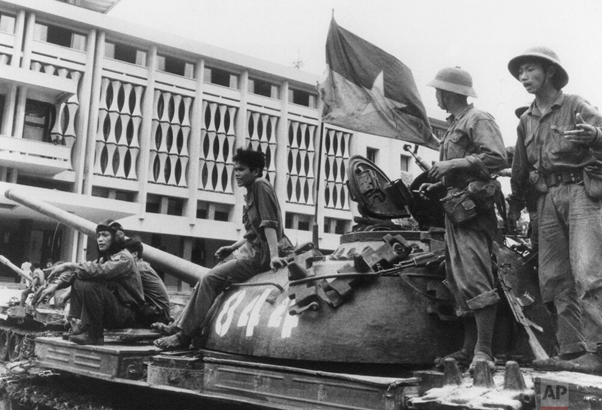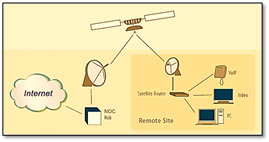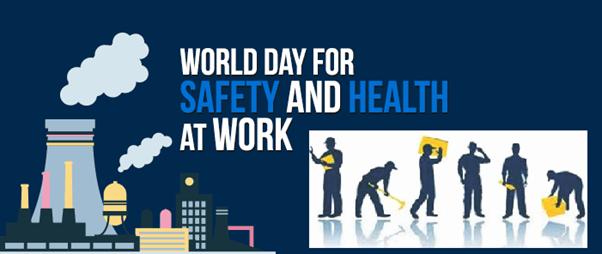Tuesday, 4th May 2021
RBI to strengthen risk-based supervision (RBS) of banks, NBFCs
In News
The Reserve Bank has decided to review and strengthen the Risk Based Supervision (RBS) of the banking sector with a view to enable financial sector players to address the emerging challenges.
About the News
- The RBI uses the RBS model, including both qualitative and quantitative elements, to supervise banks, urban cooperatives banks (UCBs), non-banking financial companies (NBFCs) and all India financial institutions.
- The RBI intends to make the extant RBS model more robust and capable of addressing emerging challenges, while removing inconsistencies, if any.
- It is intended to review the existing supervisory rating models under CAMELS approach for improved risk capture in forward looking manner and for harmonising the supervisory approach across all SEs.
- Annual financial inspection of UCBs and NBFCs is largely based on CAMELS model (Capital Adequacy, Asset Quality, Management, Earnings, Liquidity, and Systems & Control).
- The RBI has invited bids from technical experts/consultants to carry forward the process for banks.
About the RBI Supervision Process
- Currently the supervisory functions pertaining to commercial banks, UCBs and NBFCs are integrated, with the objective of harmonising the supervisory approach based on the activities/size of the supervised entities (SEs).
- The RBI undertakes supervision of SEs with the objective of assessing their financial soundness, solvency, asset quality, governance framework, liquidity, and operational viability, so as to protect depositors' interests and financial stability.
- The supervision of the banks is conducted through offsite monitoring of the banks and an annual inspection of the banks, where applicable.
- In case of Urban Cooperative Banks (UCBs) and NBFCs, the RBI conducts the supervision through a mix offsite monitoring and on-site inspection, where applicable.

What is the RBI’s Risk Based Supervision?
- The RBS approach essentially entails the allocation of supervisory resources and paying supervisory attention in accordance with the risk profile of each institution.
- The RBS process essentially involves continuous monitoring and evaluation of the risk profiles of the supervised institutions in relation to their business strategy and exposures. This assessment will be facilitated by the construction of a Risk matrix for each institution.
Glaciers melting at a faster rate, new study finds
In News
According to a new study by ETH Zurich, the world’s glaciers are shrinking at a faster rate than before with densely-populated parts of Asia at risk of flood and water shortages if the trend continues. The study found that the world’s ice fields have lost 298 gigatons of ice per year from 2015-2019, a 30 per cent increase in the rate of retreat compared with the previous five years.
Major findings
- Glaciers vs ice sheets: Glaciers tend to have a faster response to climate change compared with ice sheets in Greenland and Antarctica, and are currently contributing more to sea-level rise than either individual ice sheet.
- Fastest disappearing glaciers: According to the research glaciers in Alaska, the Alps and Iceland are among those disappearing at the fastest pace.
- Situation in Himalayas: The researchers found the situation in the Himalayas particularly worrying and swathes of India and Bangladesh could face water stress during dry periods when rivers like the Ganges and Indus are mainly fed by glacial runoff.
- Slowed glacial melt in some areas: The researchers also identified areas where melt rates slowed between 2000 and 2019, such as on Greenland's east coast and in Iceland and Scandinavia. They attribute this divergent pattern to a weather anomaly in the North Atlantic that caused higher precipitation and lower temperatures between 2010 and 2019.
Impact of glacial melt
- Altered river flows: In the Himalayan Region, the increased glacier melting could lead to increased glacial shrinkage in the coming years. As glacier shrinkage keeps accelerating, populous countries like India and Bangladesh could face water or food shortages in a few decades.
- Impact on economic activities: The glacial melt that is being witnessed today in Antarctica and Greenland is changing the circulation of the Atlantic Ocean and has been linked to collapse of fisheries in the Gulf of Maine and more destructive storms and hurricanes around the region.
- Impact on weather pattern: The melting ice sheets can bring about changes in the ocean’s circulation, alter global temperature pattern and even drive extreme weather events around the world.
- Impact on humans and wildlife: As sea ice and glaciers melt and oceans warm, ocean currents will continue to disrupt weather patterns worldwide. Warmer waters will have an impact on industries that thrive on fisheries. Coastal communities will be impacted by flooding and frequent storms. In the Arctic, as sea ice melts, wildlife like walrus are losing their home and polar bears are spending more time on land, causing higher rates of man-animal conflicts.
Sources
https://www.aljazeera.com/news/2021/4/28/world-glaciers-melting-at-fast-rate-new-study-finds
https://www.bloombergquint.com/onweb/glaciers-are-melting-more-rapidly-risking-floods-and-drought
IPR and Vaccine
In News
India and South Africa are preparing for a fresh push at the World Trade Organization (WTO) for a waiver of patent protections on Covid-19 vaccines.
About the News
- Effective 1 May, opening up of vaccines for everyone above 18 and for achieving universal vaccination India requires 1,878 million doses at the rate of two doses per person (approximately 939 million adults).
- However, India has only two vaccines, one locally developed and another with a licence. These two manufacturers can make 80-90 million doses per month, which may expand to approximately 160 million doses per month by July. This has created a demand supply gap.
- The arrival of vaccines against Covid-19 gives hope in ending the pandemic, but inoculating millions of people all over the world would require the massive production of vaccines, followed by their equitable distribution.
- An impediment to production and distribution of vaccines is the intellectual property (IP) rights that their developers enjoy. Thus, India and South Africa have together proposed that the World Trade Organization waive certain provisions of the TRIPS agreement when it comes to Covid-19 vaccines, drugs and therapeutics.
About IPR agreement at WTO
- The 1995 agreement on Trade-Related Aspects of Intellectual Property Rights (TRIPS) is a key legal instrument that harmonises intellectual property (IP) protection by imposing binding obligations on member countries to ensure a minimum level of protection and enforcement of IP rights in their territories.
- Members the World Trade Organization (WTO) have agreed to provide patent protection for any invention, be it a product (say, a medicine) or a process (method of producing it).
- Proponents say that IP protection incentivises innovation and should therefore be strengthened through a network of national and international laws. Meanwhile, critics argue that IP rights, especially those on patents, hinder the introduction of affordable vaccines and drugs in developing countries and deny people their right to health.
What are factors acting as an impediment to Covid-19 Vaccine Equity?
- Exclusive rights of Patent Holders: As the vaccines and other treatments developed to combat Covid-19 are subject to patent protection under the TRIPS agreement, the patent holders have the exclusive right to manufacture, sell, and use the vaccine or the drug for the entire term of patent protection of 20 years from the date of the filing of the patent.
- Such protection can impede wider accessibility of vaccines and prolong the pandemic.
- Agreement between developers and manufacturers: At this stage, the biggest impediment at ensuring speed and scale of vaccination appears to be the exclusive nature of agreements between developers and manufacturers.
- Example: Oxford, as opposed to its initial plan of making know-how and Intellectual Property (IP) available for all for its vaccine, entered into an exclusive agreement with AstraZeneca. In turn, AstraZeneca entered into an exclusive manufacturing agreement with SII.
- Vaccine monopolies: While rich countries such as the US, the UK and the EU funded the development of vaccines, they failed to curb production concentration.
- In the race to access vaccines swiftly, rich countries did not negotiate IP waivers for poor countries, even though it was public money that largely funded the R&D.
- The Economic Intelligence Unit (EIU) estimates that while the mass of the population in the wealthier countries are likely to be immunized by mid-2022, mass immunization will take until 2024, if it happens at all, in the poorer economies.
- Patent Pricing: Patents also affect the price of the patented technology as patent holders may decide to license or provide that technology for high prices which may far exceed production costs. In particular, such issues are exacerbated by the fact that the prices paid by States to access vaccines/medicines are often not disclosed.
What are the flexibilities under the TRIPS agreement and how will they help?
- Exceptional circumstances: The Marrakesh Agreement establishing the WTO provides that in “exceptional circumstances”, the Ministerial Conference may waive an obligation imposed on a WTO member country by the WTO Agreement or any other multilateral trade agreement.
- The Covid-19 global pandemic, the worst global health crisis in the last 100 years, undoubtedly constitutes an “exceptional circumstance”.
- The waiver would suspend the IP obligations on countries so that those with manufacturing capabilities could produce the Covid-19 vaccines and export them to those nations that lack the manufacturing capability without fearing a legal challenge at the WTO.
- Compulsory Licensing: The TRIPS Agreement contains an important flexibility of compulsory license, the right of a government to issue a license to make use of a patent during the patent term without the patent holder’s consent. Given limited domestic capacity, it is advisable to involve other drug makers in vaccine manufacturing by invoking the compulsory licensing provision under the original Indian Patent Act, 1970 and Indian Competition Act, 2002.
- Voluntary licenses: This is another flexibility under the WTO agreement under which licenses are given by patent holders to generic companies on mutually agreed terms. Example: The AstraZeneca Covid-19 vaccine has been licensed to India’s Serum Institute is an example of a voluntary license.
But these flexibilities come with their share of conditions, which are as follows:
- Suspension of IP obligations superfluous: Those who oppose India and South Africa’s proposal for a TRIPS waiver argue that since the TRIPS Agreement contains several flexibilities that can be used to address public health exigencies, the demand to suspend IP obligations is superfluous. Example: Compulsory Licensing
- Problems with Compulsory Licensing: While countries that have manufacturing ability in the pharmaceutical sector can effectively employ compulsory licenses, a large number of LDCs do not have such capability. Even developing countries that can use compulsory licenses to produce patented drugs are always under pressure from developed countries not to issue such licenses.
- For example, India was subjected to relentless attacks by the US government when it issued a compulsory license in 2012 to produce a generic version of Bayer’s cancer drug
- Problems with Voluntary Licensing: The voluntary licenses are often shrouded in secrecy where the patent holder controls important decisions such as who would be the ultimate beneficiaries of the drug and how the third-party sellers are to be selected.
- Export Issues of patented vaccines: The TRIPS Agreement states that a compulsory license may be issued predominantly for the domestic market of the country issuing the license. Thus, generic medicines produced under a compulsory license cannot be exported.
- As a result, countries that have limited manufacturing ability in the pharmaceutical sector will not be able to benefit from the provision on compulsory licensing.
- Difficulty in replicating vaccines: The vaccines are difficult to replicate even with the patents shared. Even with the blueprint and technical advice, a modern factory would be able to get vaccine production going in about three to four months. The know-how associated with the manufacturing process might be the biggest challenge in facilitating mass manufacture of vaccines.
Conclusion
With every country suffering, pressure should be built upon the WTO so that original promoters of the product patent idea should be persuaded to relax patent norms in view of the crisis. Also, there is need for increasing the production of vaccines and ensuring their equitable access would also require building the institutional capacity in several countries, overcoming systemic bottlenecks, and undertaking the necessary reforms in the administrative machinery and the legal framework.
This day in History- Fourth Anglo-Mysore War Ended

On May 4, 1799, the Fourth Anglo-Mysore War came to an end with the Siege of Seringapatam. Tipu Sultan’s army could not hold the Fort and the siege came to an end with the death of Tipu himself. Lieutenant General George Harris, commanding the Madras force was in overall command of the British army. The British secured a decisive victory. On the next day, 5th May 1799, Tipu Sultan was buried with due ceremony, his body escorted by British Grenadiers.
Image of the day- Structure of N501Y spike protein mutant

This is the image of the structure of N501Y spike protein mutant (in blue) in UK (B.1.1.7) variant of coronavirus, published by researchers at the University of British Columbia. The mutant spike is seen attached to two copies of the ACE2 human receptor (in red). The highly infectious B.1.1.7 variant of the coronavirus, first detected in the UK in December 2020, is responsible for the growing number of infections in many countries, including India and Canada. The different molecular structures of these emerging variants determine whether they’ll respond to existing treatments and vaccines.
Article 311(2) of the Indian Constitution
- Context: A Jammu and Kashmir Government teacher was terminated from his services without holding any inquiry.
- Article 311 of the Constitution acts as a safeguard to civil servants.
- Article 311(2) states that any person who is a member of Union or State civil services or an all-India service or holds a civil post under the Union or a State cannot be dismissed or removed or reduced in rank unless and until an inquiry is held where he is informed of the charges against him and is given a reasonable opportunity to be heard in respect of those charges.
- It is not necessary for the person to make any representation on the penalty proposed except if he is dismissed or removed or reduced in rank on grounds of criminal charge.
- The conditions in which inquiry is not held are
- not reasonably practicable to hold such inquiry (certified by authority)
- President/Governor are satisfied that in the interest of the security of the state that it is not expedient to hold such inquiry
Special 301 Report
- Context: India placed on priority watch list for lack of Intellectual Property rights protection and enforcement.
- This report identifies trade barriers to United States companies and products due to the intellectual property laws, such as copyright, patents, and trademarks, in other countries. It is published as a part of Section 301 of the US Trade Act of 1974 by the Office of the United States Trade Representative (USTR).
- This year, India and eight other countries are placed in the Priority Watch List for IP protection and enforcement. India was categorized in the same list last year too.
Primary source: https://ustr.gov/sites/default/files/2020_Special_301_Report.pdf
Putola Nach
- Context: Assam string puppetry participates in COVID campaign.
- Putola Nach (putal- doll and nach- dance) is a traditional string puppet theatre from Assam.
- Scenes from Ramayana and Mahabharata are performed in this puppetry.
- The putola nachis also called putala bhaona due to its link with the 16th century bhaona theatre and also incorporates contemporary educational themes such as the fight against deforestation or family planning.

Primary source: https://wepa.unima.org/en/putala-nach/
A ‘One Health’ approach that targets people, animals – The Hindu
Essence - Discussions that took place around World Veterinary Day, on April 24, 2021, focused on acknowledging the interconnectedness of animals, humans, and the environment, an approach referred to as “One Health”. In this context, the article discusses how the battle against COVID-19 can be used as an opportunity to meet India’s ‘One Health’ targets.
Why you should read this article?
- Know about the need to consistently document the linkages between the environment, animals, and human health, thereby developing a One-Health approach.
- Briefly learn about India’s ‘One Health’ vision derived from the tripartite-plus alliance and the initiatives taken under it.
- Understand the challenges in achieving the targets under the ‘One Health’ vision and the remedial measures to overcome them.
In India’s Covid-19 challenge, China’s hopes and anxieties - HT
Essence - The second wave of Covid-19 in India has been among the biggest international stories being covered across the Chinese media. The coverage reflects a sense of anxiety and opportunity. This massive public health crisis across the Indian subcontinent would hurt Chinese commercial interests and investments. There is a commercial opportunity too, given the shortage of emergency supplies, equipment and therapeutics. But, at a deeper level, there are geopolitical opportunities. China has expressed solidarity, again offering to assist as per India’s needs. It is not altruism but Beijing is driven by self-interest. These range from containing the virus’ threat away from its borders to reshaping perceptions and making deeper inroads into the Indian subcontinent.
The longer it takes to address the immediate challenges, the higher will be the individual, social, economic and reputational costs, diminishing India’s national power in the long-term. Therefore, any supplies that help in augmenting capacity should be welcomed, irrespective of where they come from. This is in India’s strategic interests.
Why you should read this article?
- To learn about the prospects that China has in this crisis as a result of its manufacturing prowess.
- To be aware of the geopolitical leverages that China is attempting to achieve as a result of the pandemic, with specific examples.
- To be informed about recent diplomatic developments on China's side in order to demonstrate solidarity with India.
- To comprehend why it is in India's strategic interest to accept any assistance in bolstering capacities to combat crises.
Telangana Man’s Low-Cost Corn Husk Pen Helps Reduce Stubble Burning
Present Situation
- In Telangana, several farmers cultivate corn. However, after the harvest, the fields are left with the corn’s outer husk. The husk is burned causing pollution.
- To stop issue of stubble burning, an innovation like eco-friendly pen has been launched.
Eco-friendly Pens
- Raju Mupparapu from Telangana innovated eco-friendly pens from dried corn husk which garnered recognition from Telangana State Innovation Cell.
- He has introduced from several low-cost innovations, including sensors for street-lights and battery-operated bicycle.
Outcomes
- It will reduce plastic waste generated from disposable pens.
- It will prevent burning of the corn husk.
- It will boost local innovation especially among the local administration.
Where can we use this case study?
Best practise to reduce stubble burning, solve environmental issues, promote local cost innovation, curb the plastic problems.
Share the article
Get Latest Updates on Offers, Event dates, and free Mentorship sessions.

Get in touch with our Expert Academic Counsellors 👋
FAQs
UPSC Daily Current Affairs focuses on learning current events on a daily basis. An aspirant needs to study regular and updated information about current events, news, and relevant topics that are important for UPSC aspirants. It covers national and international affairs, government policies, socio-economic issues, science and technology advancements, and more.
UPSC Daily Current Affairs provides aspirants with a concise and comprehensive overview of the latest happenings and developments across various fields. It helps aspirants stay updated with current affairs and provides them with valuable insights and analysis, which are essential for answering questions in the UPSC examinations. It enhances their knowledge, analytical skills, and ability to connect current affairs with the UPSC syllabus.
UPSC Daily Current Affairs covers a wide range of topics, including politics, economics, science and technology, environment, social issues, governance, international relations, and more. It offers news summaries, in-depth analyses, editorials, opinion pieces, and relevant study materials. It also provides practice questions and quizzes to help aspirants test their understanding of current affairs.
Edukemy's UPSC Daily Current Affairs can be accessed through:
- UPSC Daily Current Affairs can be accessed through Current Affairs tab at the top of the Main Page of Edukemy.
- Edukemy Mobile app: The Daily Current Affairs can also be access through Edukemy Mobile App.
- Social media: Follow Edukemy’s official social media accounts or pages that provide UPSC Daily Current Affairs updates, including Facebook, Twitter, or Telegram channels.






